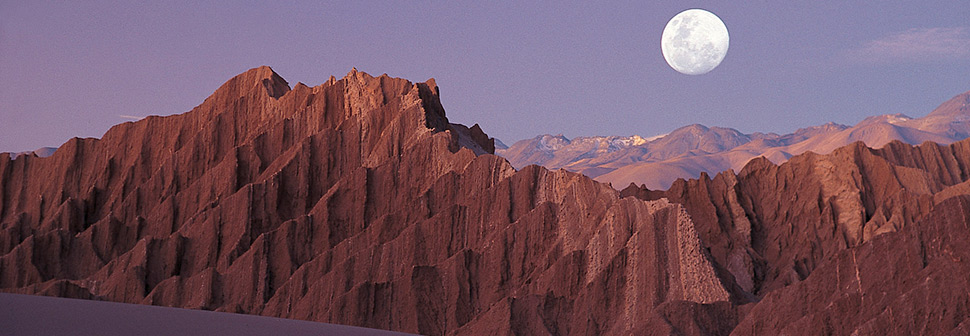The magical desert of Atacama


The setting of the Atacama Desert is inspiring, with wind-sculpted canyons and salt lakes providing a backdrop that not only looks extraterrestrial but it has actually been used to test Mars Rovers in simulations.
If you are planning on making a three to four-day trip to the Chilean desert, stay in the town of San Pedro de Atacama. Thanks to its proximity to various attractions, you can make excursions to the nearby salt lake, geysers, and observatories. If you are planning on staying a little bit longer, you can a hire a driver and cross IGNORE INTO Bolivia and explore the northern mines and churches.

The most popular excursion from San Pedro is to the El Tatio geysers. At an altitude of 14,173ft above sea level and 55 miles from the town, a 4 am start is required if you want to thoroughly enjoy the adventure. The rising sun slants across the field of some 80 geysers which spurt highest when the cold morning atmosphere prevents the steam from evaporating.
You can also take a buoyant and bracing dip in one of the swimming holes at the Cejar Lagoon, where water temperatures vary. With 28 percent salt concentration, there’s no point trying to swim; give in and float. There are on-site showers for cleansing your salty coating afterward.
It’s an ideal adventure for those who find rainforests hot and claustrophobic. The chilean altiplano can be visually breathtaking, and there’s a good chance of seeing herds of vicuña and alpacas as well as viscachas, flamingos, and condors.
Finally, there are several archeological sites in the Atacama Desert, including Tulor, which features the remains of circular adobe buildings in the Valley of the Moon. It was settled by indigenous people who grew maize and herded llamas some 2,800 years ago. You can also visit the Incan fortress at Pukará de Quitor, built in the 12th century, but it was taken over by Spain in the 16th century.

The weather, on average, is dry and sunny, but the best time to go is probably early autumn (October and November) and late summer (March-April) when there are fewer tourists. For stargazers, these are also perfect dates for clear skies.
Do not forget to pack a sun hat, sunblock, a fleece for early mornings, binoculars or telescope, a camera with a open shutter setting to capture star trails, and a stargazing guide.
Prepared by
LatinAmerican Post | Luisa Fernanda Paez
Copy edited by Susana Cicchetto





